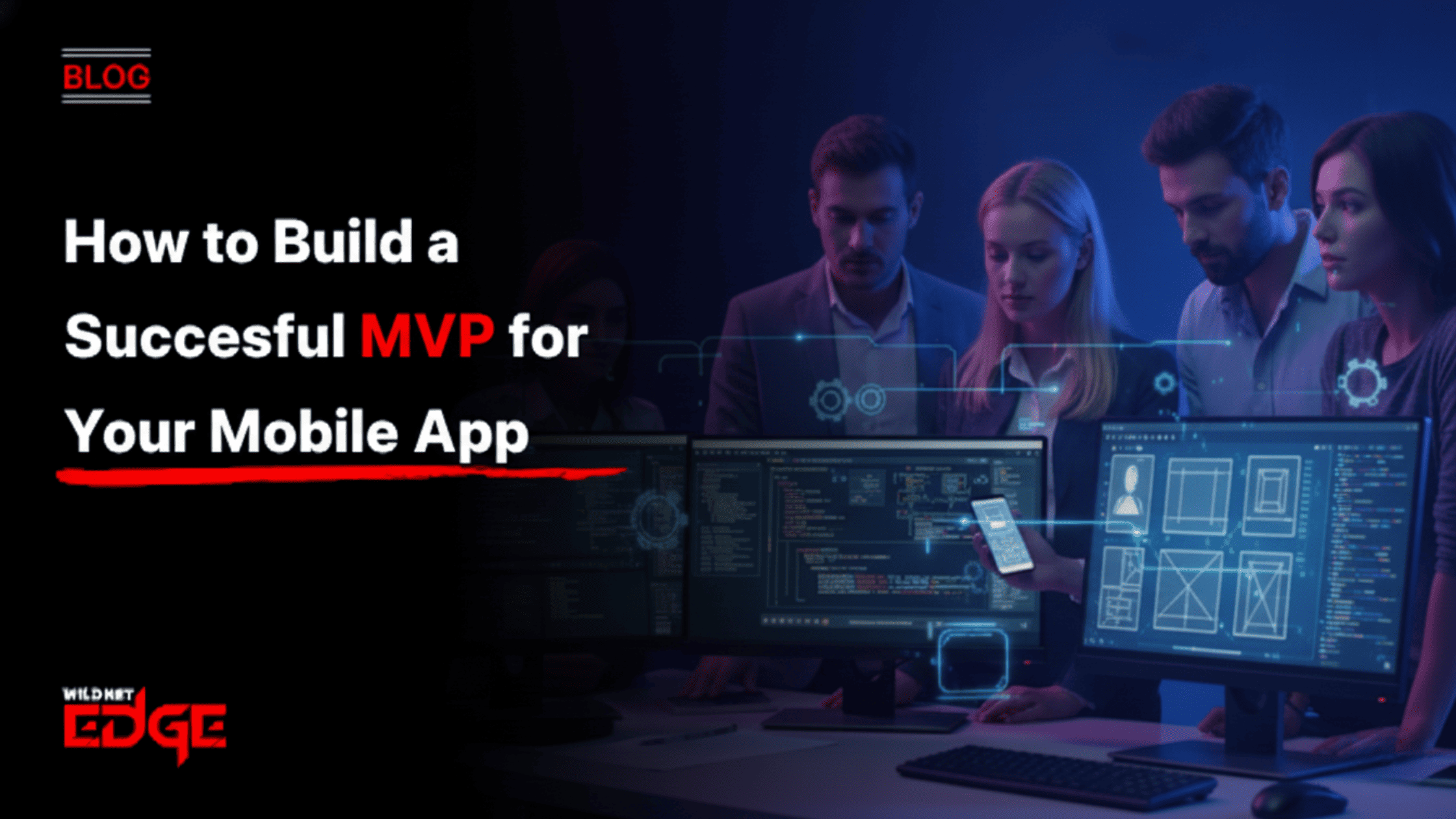TL;DR
This article details the strategic process of building a Minimum Viable Product specifically for mobile applications. It explains that an MVP is the most basic version of an app, designed for rapid launch and learning. The guide emphasises that this lean app development approach is crucial for mobile app validation, allowing startups to test their core assumptions with real users before committing significant resources. It outlines a structured process involving defining the core problem, prioritising essential features, building quickly, and iterating based on user feedback. For founders, building an MVP is presented as the most innovative, most cost-effective way to reduce risk and increase the chances of long-term mobile app success.
You have a brilliant idea for a mobile app that could change the world, or at least capture a significant market share. But in the highly competitive app stores, launching a fully featured product without validating your core assumptions is a high-risk gamble. The vast majority of successful mobile apps didn’t start with a bang; they started with a Minimum Viable Product. Building an MVP for mobile apps is the most intelligent and resource-efficient way to turn your vision into a viable business.
What is an MVP for Mobile Apps?
An MVP for mobile apps is the simplest version of your application that includes just enough features to solve a core problem for your earliest users and allow you to gather meaningful feedback. It is not a buggy or incomplete product. Instead, it is a strategically stripped-down version designed for rapid launch and learning.
The “Minimum” means focusing only on the essential functionality. The “Viable” means it must actually work, solve the core problem effectively, and provide a positive user experience. This approach is the heart of lean app development, prioritising speed and validated learning above all else.
Why an MVP is the Smartest First Step
For any startup, especially in the mobile space, resources are finite. An MVP approach protects those resources while maximising your chances of success.
Crucial for Mobile App Validation
The single biggest reason mobile apps fail is a lack of market need. An MVP is your fastest path to mobile app validation. Instead of spending months building features you think users want, you launch a core version and see how they actually use it. Does it solve their problem? Are they willing to engage with it? This real-world feedback is infinitely more valuable than surveys or guesswork.
Significant Reduction in Time and Cost
Building a full-featured mobile app for both iOS and Android can take 6-12 months and cost hundreds of thousands of dollars. An MVP for mobile apps, focused on core functionality, can often be built and launched in just 3-5 months for a fraction of that cost. This speed saves money and gets your product into the market faster, allowing you to start learning and iterating sooner. This efficiency is a key reason to work with an experienced MVP Development Company.
Attracting Early Adopters and Investors
Launching an MVP allows you to start building a community of early adopters who can become your most valuable advocates. Furthermore, investors are far more likely to fund a company with a working product and tangible user metrics than one with just an idea. An MVP provides concrete proof of your ability to execute.
The MVP Development Process: Build, Measure, Learn
Building a successful MVP follows a structured, iterative cycle.
1. Define the Core Problem and Solution
Start by clearly articulating the single most crucial problem your app solves and for whom. Then, define the absolute minimum set of features required to deliver that core solution effectively. Be ruthless in cutting anything that is a “nice-to-have.”
2. Prioritise Features Ruthlessly
Use techniques like MoSCoW (Must have, Should have, Could have, Won’t have) to categorise potential features. Your MVP should consist only of the “must-have” features. Everything else can wait for future iterations based on user feedback.
3. Choose the Right Technology (Native vs. Cross-Platform)
Decide how you will build your MVP.
- Native: Building separate apps for iOS and Android offers the best performance, but is slower and more expensive.
- Cross-Platform (Flutter/React Native): Building one app that works on both platforms is faster and more cost-effective, making it an ideal choice for many MVPs for mobile apps.
4. Build Quickly and Efficiently
The goal is speed. Work with a development team that embraces efficient methodologies and focuses on delivering a high-quality, functional product as quickly as possible. This is where partnering with a firm specialising in Software Development for Startups can be invaluable.
5. Launch, Measure, and Learn
Get your MVP into the hands of your target users. Use analytics tools to track their behaviour: Where do they get stuck? Which features do they use most? Collect qualitative feedback through surveys and interviews. This data is the fuel for your next iteration, guiding your mobile app validation process.
Our MVP Development Services in Action: Case Studies
Case Study 1: A Social Discovery App
- The Challenge: A founder had a unique idea for a location-based social app, but needed to validate user interest before building complex features like real-time chat and event management.
- Our Solution: We worked with them to define an MVP for mobile apps that focused solely on user profiles and discovering nearby users. We used Flutter for rapid cross-platform development.
- The Result: The MVP launched in three months and quickly gained traction within a target university campus. The user feedback confirmed the core concept’s appeal. It highlighted the demand for specific group features, providing a clear direction for the next phase of development supported by our Mobile App Development Services.
Case Study 2: A Niche eCommerce Marketplace App
- The Challenge: An entrepreneur wanted to create a marketplace app for a specific hobbyist community, but wasn’t sure if users would trust a new platform for transactions.
- Our Solution: The initial MVP focused only on browsing listings and user-to-user messaging. We intentionally excluded payment processing first to validate if users would even engage with the core discovery and communication features.
- The Result: The mobile app validation was positive; users actively listed items and messaged each other. This demonstrated apparent demand, justifying the subsequent investment in building a secure transaction system and scaling the platform.
Our Technology Stack for Mobile MVPs
We choose the right tools for speed, quality, and future scalability.
- Cross-Platform: Flutter, React Native
- Native: Swift (iOS), Kotlin (Android)
- Backend: Firebase, Supabase (for rapid backend setup), Node.js
- Analytics: Mixpanel, Amplitude, Firebase Analytics
- Prototyping: Figma, Flutter
Conclusion
Building an MVP for mobile apps is the most innovative, most strategic way for any startup to begin. It builds focus, minimises risk, and maximises learning through real user interaction. By embracing lean app development, you can test your core assumptions, iterate quickly based on data, and build a product that the market genuinely needs. This disciplined approach to mobile app validation is the foundation of sustainable success.
Ready to transform your app idea into a validated business? At Wildnet Edge, our AI-first approach enhances our Product Development Services, allowing us to build MVPs that are not only lean and fast but also intelligent and ready to scale.
FAQs
The features should be the absolute minimum required to solve the core user problem and deliver the primary value proposition. Ask yourself: “If I remove this feature, can the user still achieve the main goal?” If the answer is yes, it probably doesn’t belong in the MVP.
It’s far riskier to launch a full-featured product that nobody wants. An MVP, when communicated correctly as an early version for feedback, sets expectations appropriately. Early adopters often appreciate being part of the development journey.
While it varies considerably based on complexity, a well-built MVP for mobile apps developed by a professional agency can often range from $30,000 to $80,000, significantly less than a complete build.
User retention is often the most critical metric. Are users coming back after the first day, first week, first month? High retention is the strongest signal that you are providing real value and are on the path to product-market fit.
It allows you to test your idea on both iOS and Android simultaneously with roughly half the development effort and cost. This maximises your initial market reach and learning opportunities during the crucial mobile app validation phase.
Use a combination of quantitative data (in-app analytics) and qualitative feedback (surveys, user interviews, feedback forums). Ask open-ended questions and focus on understanding the “why” behind user behaviour.
This is precisely why you build an MVP! It’s an opportunity to pivot your strategy based on real market data before you’ve spent your entire budget. The learnings from a “failed” MVP are incredibly valuable and can guide you toward a more successful product direction.

Nitin Agarwal is a veteran in custom software development. He is fascinated by how software can turn ideas into real-world solutions. With extensive experience designing scalable and efficient systems, he focuses on creating software that delivers tangible results. Nitin enjoys exploring emerging technologies, taking on challenging projects, and mentoring teams to bring ideas to life. He believes that good software is not just about code; it’s about understanding problems and creating value for users. For him, great software combines thoughtful design, clever engineering, and a clear understanding of the problems it’s meant to solve.
 sales@wildnetedge.com
sales@wildnetedge.com +1 (212) 901 8616
+1 (212) 901 8616 +1 (437) 225-7733
+1 (437) 225-7733































